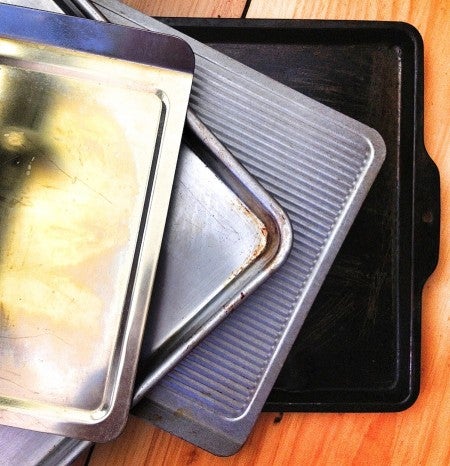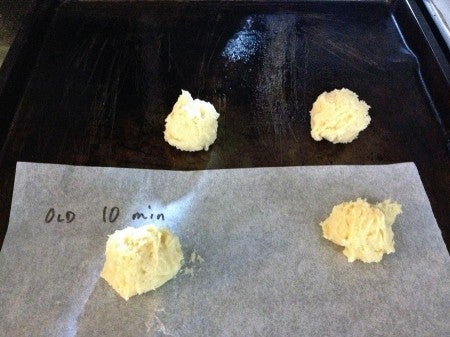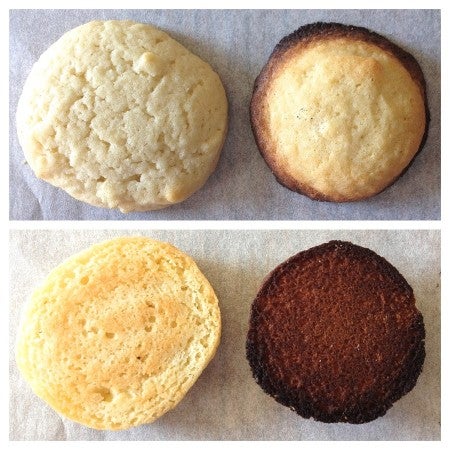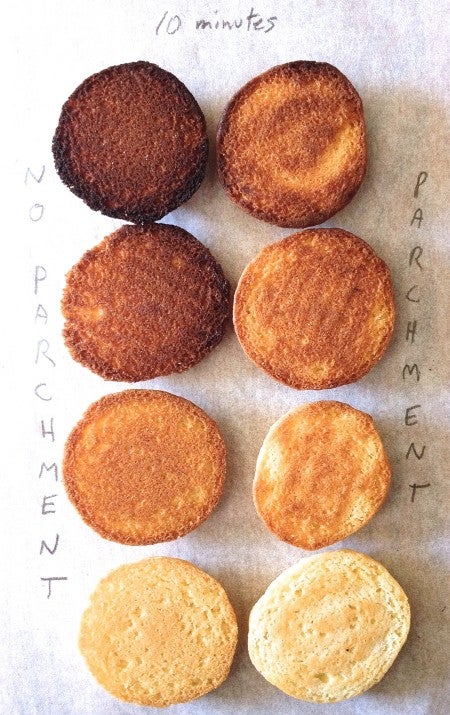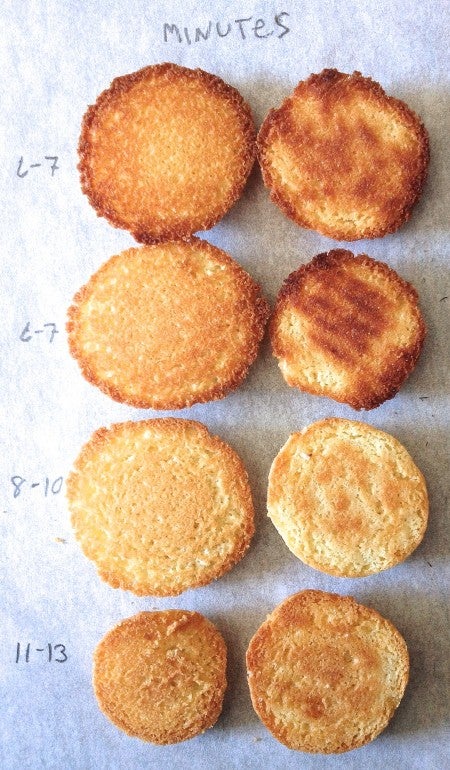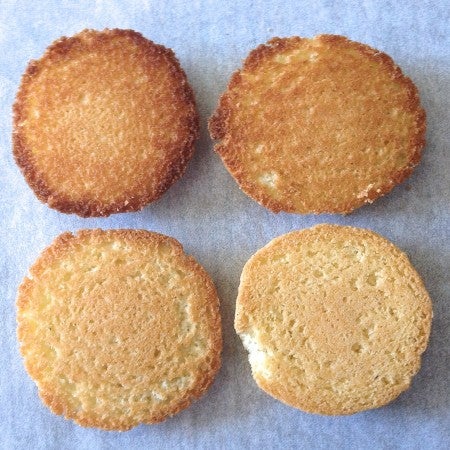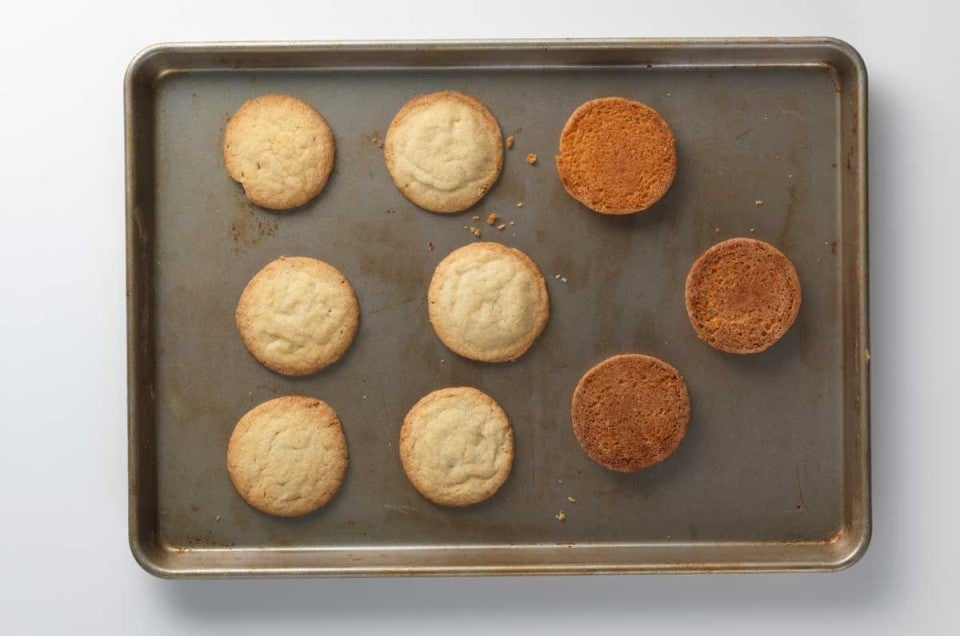


Four cookies.
Same batch of dough. Same baking temperature. Same baking time.
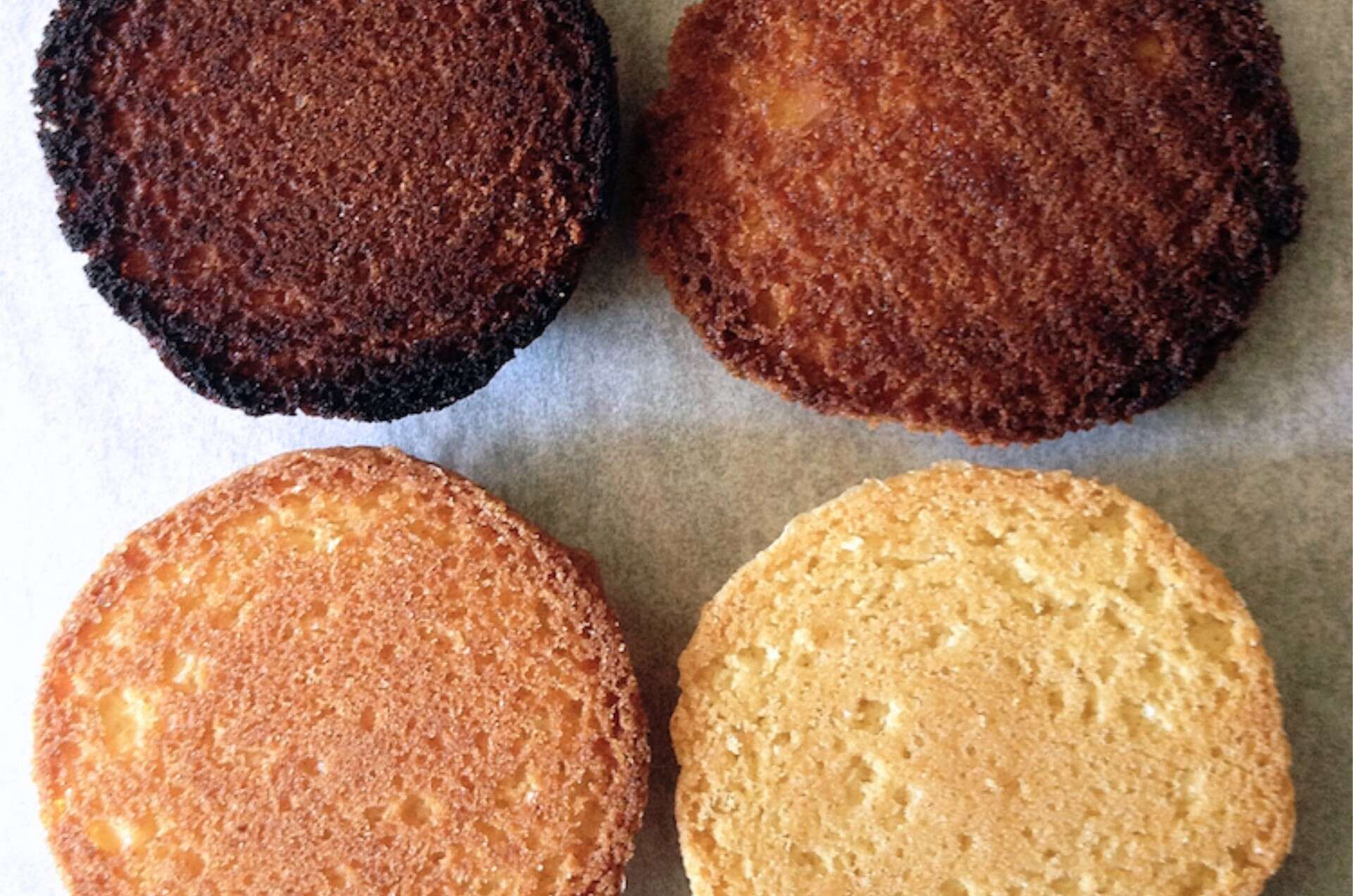
So, looking at their bottoms – why did they brown so very differently?
The answer?
It's all in the pan.
Shown above are four "colors" of pan. All are made from aluminum, yet their surfaces are very different.
Left to right, we have a shiny-surface pan; a light-gray baking sheet; one of our dark-gray KAF cookie pans; and my grandmother's inexpensive old aluminum pan, blackened from years of use.
I've noticed that occasionally my cookie baking times differ a lot from what the recipe calls for. This doesn't seem to happen with King Arthur recipes; it's more with those I get from a friend, or out of a magazine.
At first I thought it might be my oven temperature. So I bought two different oven thermometers, stuck them in the oven side by side, and compared their readings to the temperature at which I'd set my oven.
All three agreed, at least within 10° or so.
So... what else?
I always use a half-sheet pan, lined with parchment, to bake cookies.
What would happen if I switched pans?
And while I'm at it, is there a difference in browning when you use parchment, vs. none?
Let's put these questions to the test.
Here's my old, dark cookie sheet. I lined half of it with parchment, and greased the other half. I repeated this process with all four pans.
Next, I whipped up a batch of Buttery Snickerdoodle dough. I wanted to use a light-colored sugar cookie, in order to be able to see nuances of color.
I preheated the oven to 375°F – a typical cookie-baking temperature – and set a rack in the center.
One by one, I baked each pan of cookies for 10 minutes, checking my two thermometers to make sure the temperature didn't waver.
The result?
A vast difference in the finished cookies.
At left is the cookie baked on the shiny pan lined with parchment; at right, the cookie baked on the old, dark pan, without parchment.
And here's the complete result of the 10-minute bake, with "no parchment" cookies on the left, "parchment" on the right.
Top to bottom, you see cookies from the dark pan; the dark-gray pan; the half-sheet pan, and the shiny pan.
The half-sheet pan browned cookies just the way I like – with a slight degree of caramelization, which increases their flavor.
You may be thinking, "Well, that's a bummer; all I have is my old, dark cookie pans." Or maybe you invested in nice, shiny stainless steel.
Fear not; you don't need new pans, simply an awareness of how your baking time might vary from that stated in the recipe.
Using the same batch of cookie dough and same oven settings, I followed the same process again – four pans, half parchment/half greased. But this time, I paid attention to the cookies as they baked, and removed them from the oven when I judged they were done.
The result?
It's possible to get perfectly browned cookies using any type of pan, and using/not using parchment. You simply have to adjust your baking time.
Pictured above (top to bottom) are cookies baked on an old, dark pan; a dark-gray pan; a half-sheet pan; and a shiny pan.
The time range (e.g., 11 to 13 minutes) refers to whether or not the cookie was baked without parchment (e.g., 11 minutes) or with parchment (e.g., 13 minutes).
Look at the difference in baking times! Depending on the pan you use, compared to the pan the recipe developer used, you might bake a cookie only half as long as the recipe directs.
So, here are my takeaways:
Yes, all of this takes a bit of thought. But isn't it worth it?
You want to treat your family and friends to cookies that are perfectly baked, right?
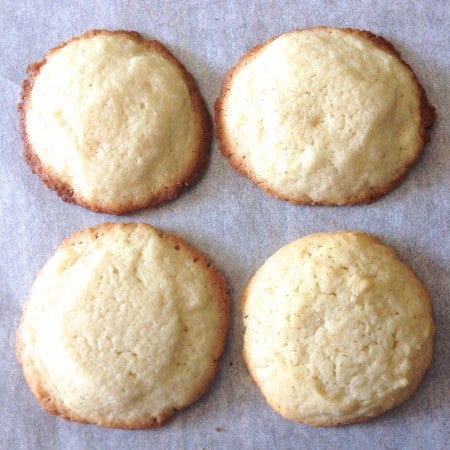
Both top...
...and bottom!
Want more tips and tricks for cookie baking? See all of our cookie skills blog posts.


